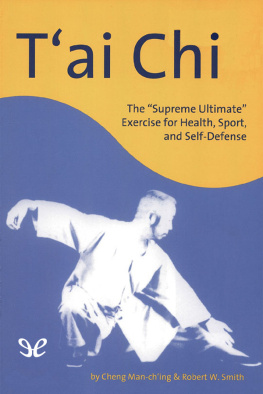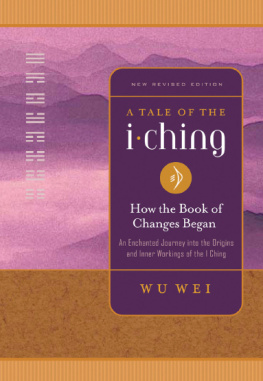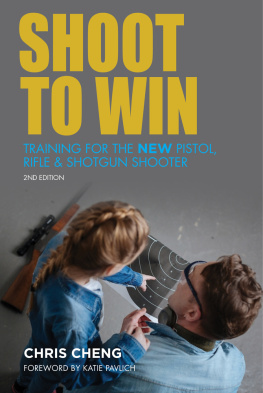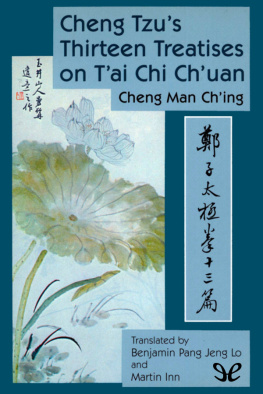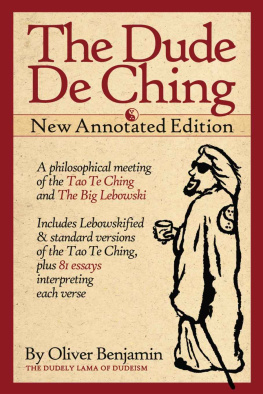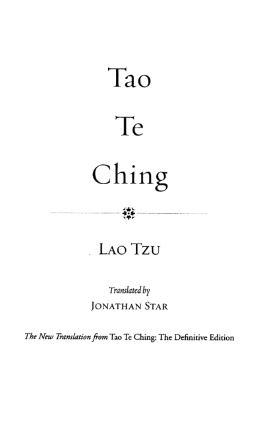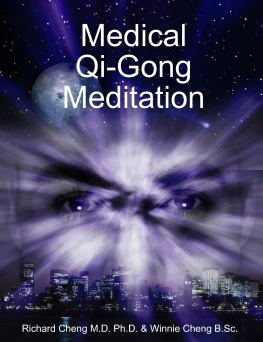Cheng Man-Ching - Tai Chi
Here you can read online Cheng Man-Ching - Tai Chi full text of the book (entire story) in english for free. Download pdf and epub, get meaning, cover and reviews about this ebook. year: 1966, publisher: ePubLibre, genre: Romance novel. Description of the work, (preface) as well as reviews are available. Best literature library LitArk.com created for fans of good reading and offers a wide selection of genres:
Romance novel
Science fiction
Adventure
Detective
Science
History
Home and family
Prose
Art
Politics
Computer
Non-fiction
Religion
Business
Children
Humor
Choose a favorite category and find really read worthwhile books. Enjoy immersion in the world of imagination, feel the emotions of the characters or learn something new for yourself, make an fascinating discovery.
- Book:Tai Chi
- Author:
- Publisher:ePubLibre
- Genre:
- Year:1966
- Rating:5 / 5
- Favourites:Add to favourites
- Your mark:
- 100
- 1
- 2
- 3
- 4
- 5
Tai Chi: summary, description and annotation
We offer to read an annotation, description, summary or preface (depends on what the author of the book "Tai Chi" wrote himself). If you haven't found the necessary information about the book — write in the comments, we will try to find it.
Tai Chi — read online for free the complete book (whole text) full work
Below is the text of the book, divided by pages. System saving the place of the last page read, allows you to conveniently read the book "Tai Chi" online for free, without having to search again every time where you left off. Put a bookmark, and you can go to the page where you finished reading at any time.
Font size:
Interval:
Bookmark:

Do the Chinese have a secret for youthfulness, health, long life and peace of mind? If they do,an import part of it lies in T'ai-chi,the exercise that millions have been practicing for centuries. To young and old, male and female, weak and strong, T'ai-chi is a wonderful source of relaxation and well-being. In fact, the Chinese consider its purpose to be nothing less than the rejuvenation and prelongation of life. T'ai-chi is an effortless and rhythmical art that stresses slow breathing, balanced and relaxed postures, and absolute calmness of mind. It requires no special equipment or place to practice, and takes no more than ten minutes a day. This book introduces T'ai-chi as a means to s healthier life, as a sport and as a method of self-defense. It is a complete step-by-step manual for the beginner. With conscientious practice, reachers will master the sequence of thirty-seven postures that make up the T'ai-chi solo exercise. Students will learn how to progress from exercise to sport to self-defense with maximum efficiency. The instructions are clear and easy to follow, and more than 275 photographs and 122 foot-weighting diagrams guarantee an understanding of the correct form. A history of T'ai-chi, including thumbnail sketches of famous masters, and the first English translation of the basic T'ai-chi document, known as the T'ai-chi Ch'uan Classics, are also included.

Cheng Man-Ching
The "Supreme Ultimate" Exercise for Health, Sport and Self-Defense
ePub r1.0
antbae 23.02.18
Ttulo original: T'ai Chi
Cheng Man-Ching, 1966
Editor digital: antbae
ePub base 1.2

Please note that the publisher and author(s) of this instructional book are NOT RESPONSIBLE in any manner whatsoever for any injury that may result from practicing the techniques and/or following the instructions given within. Martial arts training can be dangerousboth to you and to othersif not practiced safely. If you're in doubt as to how to proceed or whether your practice is safe, consult with a trained martial arts teacher before beginning. Since the physical activities described herein may be too strenuous in nature for some readers, it is also essential that a physician be consulted prior to training.
"All the photographs in this book are printed in reverse image to facilitate imitation of the movements illustrated. Thus you should follow the photogaphs exactly as though you were looking at your own reflection in the mirror. Accompanying the photographs are diagrams showing the exact position and weighing of the feet. Note that the foot diagrams are not reversed and hence show the position of your own feet as you stand looking in the "mirror" of the photographs. In some cases the photographs are not reversed and these examples are noted in the instructions."
After twenty years of practice, Professor Cheng Man-ch'ing in 1950 published Cheng-tzu T'ai-chi Ch'uan Shih-san P'ien (Cheng's Thirteen Chapters on T'ai-chi Boxing). A decade later the growing popularity of T'ai-chi Ch'uan in the world led Cheng to publish a text in English on the art. The text suffered, however, from severe inadequacies in scope and presentation. At Cheng's request, I took the text to the present publisher, but he was as disturbed about its imperfections as I. He suggested a fresh start on an entirely new book with my full collaboration. The present book is the result. It has been built from the published versions of Cheng's two booksthe one in Chinese and the other in Englishas well as from the oral instructions in T'ai-chi that I received from Cheng and my own research concerning the art.
Cheng Man-ch'ing is a remarkable man. He is a versatile and brilliant master of the "Five Excellences" (Painting, Poetry, Calligraphy, Medicine, and T'ai-chi), on the wrong side of sixty, but with the vitality of a man much younger. After I knocked on his door for a yearthe usual Chinese customhe accepted me as a student. For more than seven years it has been my pleasure to learn the intricacies of the art under his tutelage. Every bit a gentleman, he is the living representation of T'ai-chi. I have studied many systems of T'ai-chi and have had the opportunity to see in action the leading teachers of Taiwan, Hong Kong, and Singapore. None can stand before Cheng.
So in all sincerity let it be said: this is his book. My part in it is to present his teaching as clearly as possible. Paraphrasing Michael Drayton speaking of his beloved Wales, I wish to say of T'ai-chi: "If I have not done it right, the want is in my ability, not in my love."
Both Professor Cheng and I thank Liu Chen-huan for his . diligent efforts in helping to put the manuscript in final form; E. Gunberg, B. Fusaro, and D. Slater for editorial corrigenda and suggestions; and W. Neisler, R. Mischke, and E. Maginnes for assistance with the graphics. And by no means least, we thank Sylvia Jackson for her patient and excellent typing of the text through several revisions.
ROBERT W. SMITH
Introducing T'ai-chi

Man cannot live fully without exercise. The I Ching (Book of Changes) says: "Nature is always in motion. Man also should strengthen himself without interruption." Exercise leads to robust health, high spirits, and rational thinking. There are, however, many kinds of exercise: ballplaying, swimming, traditional boxing, wrestling, and weightlifting, to name but a few. Without exception, each has built-in limitations. Weather restricts ballplaying, weakness prevents participation in the more rigorous sports, and age and sex inhibit activity in others. More importantly, though these sports differ in form, they are similar in that most never go beyond reliance on weight, force, and speed.
T'ai-chi is both an integrated exercise and an enjoyable sport for all: rich and poor, strong and weak, young and old, male and female. Weather does not inhibit its practice. Requirements of time and space are minimal. If one has a space approximately four feet on a side and can spare ten minutes a day, he can practice T'ai-chi without spending a cent.
For hundreds of years Westerners have been puzzled at seeing Chinese from all walks of life doing this effortless, rhythmical, ballet-like exercise both at dawn and at dusk. By way of explanation, Chinese say that whoever practices T'ai-chi, correctly and regularly, twice a day over a period of time will gain the pliability of a child, the health of a lumberjack, and the peace of mind of a sage. The amazing results achieved suggest that this is not just idle boasting, that perhaps, in some way unknown to Western science, T'ai-chi can indeed do all this, and more. Stressing slow respiration and balanced, relaxed postures, it certainly promotes deep breathing, digestion, the functioning of the internal organs, and blood circulation. And perhaps there is also basis for the claim that T'ai-chi can relieve, if not actually cure, neurasthenia, high blood pressure, anemia, tuberculosis, and many other maladies.

Font size:
Interval:
Bookmark:
Similar books «Tai Chi»
Look at similar books to Tai Chi. We have selected literature similar in name and meaning in the hope of providing readers with more options to find new, interesting, not yet read works.
Discussion, reviews of the book Tai Chi and just readers' own opinions. Leave your comments, write what you think about the work, its meaning or the main characters. Specify what exactly you liked and what you didn't like, and why you think so.

